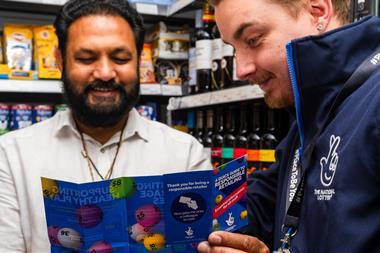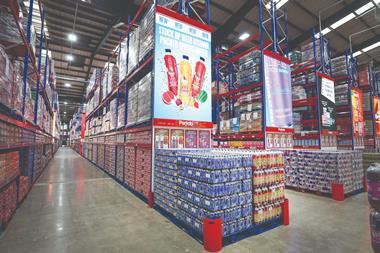
This week ACS launched our crime Report 2024. It had two objectives: to quantify the cost and distress that convenience retailers are facing every day due to rising retail crime, and to identify what retailers, the police, the courts system and the government can all do to address this problem.
Let’s start with the figures: depressing, shocking yet unsurprising and very much in line with recent reports from The Co-op, the BRC and others, and consistent with what we hear from retailers every day. The cost of crime has increased to £245m, with more than that (£339m) being spent on crime prevention. It adds up to a total cost equal to a 10p “crime tax” on every single basket. In an ongoing cost of living crisis, that adds up to a big impact on families, and of course retailers who in reality have to absorb some of that cost.
The statistic that captured media headlines was the five-fold increase in incidents of shop theft. We looked hard at this vast increase, but it still only amounts to two incidents per week per store and I think it’s an underestimate of the frequency of shop theft. Theft is also being better detected (though we also found that only 42% of incidents were being reported to the police). Our shop theft index – the balance of retailers saying theft is rising versus those saying it’s declining – is also at record levels.
The report also confirms the link between shop theft and violence. Shop theft is the biggest single trigger for the 76,000 (also almost certainly an underestimate) violent incidents that happen in convenience stores every year.
You can read all the statistics in the ACS report, but I want to talk about how we can work to reduce these figures in future. We need to address all the links in the chain and the first link is the retailer themselves: if we don’t report crime, we cannot expect it to be dealt with. A growing number of police forces are introducing user-friendly reporting platforms to help this to happen more quickly and effectively.
Then it’s up to the police to investigate these incidents, in particular to identify the handful of people who blight communities by stealing and committing other offences, usually to fund a drug habit – retailers tell us half of thieves are repeat offenders and that their number one motivation is to feed an addiction. These prolific repeat offenders are sometimes being exploited by dealers or other organised criminals and are often in a heightened state when stealing, so can escalate into violence if challenged. Of course, when there’s any violent incident, the police’s primary role is responding quickly and apprehending the offender.
The final link in the chain is the courts system. Yes, we need tougher sentencing and more options for the courts to punish those who victimise retailers and colleagues, which is why a standalone offence for assaulting retail workers would be a step forward. It’s also about making sure cases get to court in the first place, and that the penalties imposed break the cycle of reoffending – whether that’s custodial sentences, suspended sentences, rehabilitation orders or other community sentences.
I think the Retail Crime Action Plan launched last autumn and the best practice we see from some Police & Crime Commissioners set the right agenda. I’ve recently spoken to PCCs from the West Midlands, Kent, Sussex and the Thames Valley, and all of these are circling around the right strategies for tackling retail crime, as some others will also do.
It’s now about delivering against that agenda. The data on the problem is just the start.



















No comments yet